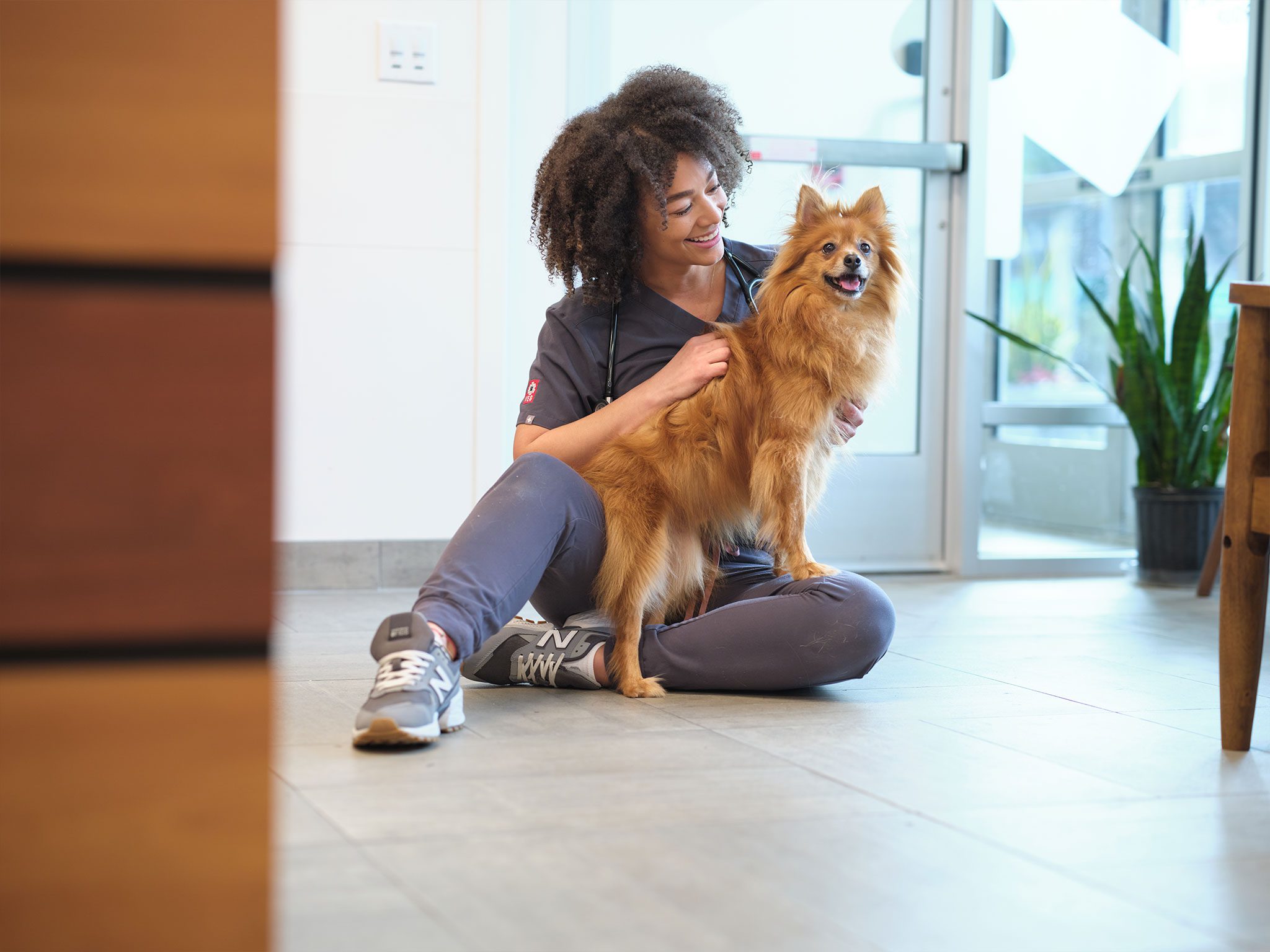
Bloat in Dogs: What Pet Parents Need to Know
Dr. Pansy Suzuki
Call & Speak with a doctor Open 24/7, Even Holidays!
Walk in today for:
Emergencies
Point-of-Care Ultrasound
Urgent Care
X-Rays
Diagnostics + Testing
End-of-Life Care
Surgery
Treatment + Hospitalization
You might think of bloat as the feeling you get when you’ve had one too many pizza slices on movie night. But bloat in dogs is very different and more concerning. Here’s what you need to know about bloat in dogs, how to spot the early signs, and when to seek immediate care from your primary care vet and when to go to your nearest VEG animal hospital.
In canines, a bloated tummy could be a sign of a serious health condition called gastric dilatation-volvulus (GDV). Let’s explore some potential causes of bloating in dogs as well as the symptoms to look out for.
Causes of Bloat
Bloat or GDV, typically affects larger breeds with deep chests. This condition occurs when the stomach fills with gas and twists on itself, blocking both the entrance and exit. The gas build-up makes the stomach expand, causing severe pain and potentially life-threatening complications.
Genetics and Risk Factors
Older dogs, ones with a family history of bloating and certain large breeds are more susceptible to GDV. These breeds include:
- Great Danes
- Saint Bernards
- Weimaraners, and truly any dog that has a deep chest
Understanding the genetic predispositions and other risk factors is crucial for prevention and early detection.
Dietary Habits and Environmental Triggers
There are different factors which could increase the likelihood of bloating in your dog. Some of these include:
- Rapid eating
- Eating from an elevated bowl
- Heavy exercise around meal times; think, excessive panting causes air to go into the stomach which can lead to your dog bloating
- Stressful environments
- Irregular meal schedules
Managing these conditions may help prevent bloat in your pooch.
What Are the Signs of Bloat in Dogs?
Symptoms of GDV are fast moving, so recognizing the signs is essential for your pet’s health. These symptoms include:
- Distended, hard abdomen
- Unsuccessful attempts to vomit (dry heaving)
- Restlessness and pacing
- Drooling excessively
- Showing signs of pain (i.e., whining or groaning upon touch)
- “Downward dog” or “prayer position” = painful abdomen
If you notice any of these symptoms, contact VEG animal emergency hospital right away for quick intervention. Timely action can make a significant difference in outcomes for dogs suffering from bloat.
How Can Bloat Be Prevented?
Practical Measures
Implementing feeding practices such as using slow-feeder bowls, maintaining a calm environment around feeding times and avoiding vigorous exercise before and after meals can significantly reduce the risk of bloat. Regular veterinary check-ups and discussing individual risk factors with your vet can also help in creating a tailored prevention plan.
Monitoring and Early Detection
We recommend regularly monitoring your dog for unusual signs or behaviors, especially after eating. Understanding your dog’s health history and being aware of the early signs of bloating is essential for getting your pooch timely treatment.
Protect Your Dog Against Bloat: Call VEG Right Away
Here’s a mantra to remember: When in doubt, check it out.
If you suspect your dog is experiencing bloat, don’t wait. Bloat is truly a time sensitive condition and the sooner this is diagnosed, the better the chance for a full recovery. Call or head over to the VEG animal urgent care near you. Time is of the essence with this condition, and our highly experienced team is ready to provide the critical care your pup needs along with some TLC for a speedy recovery.

